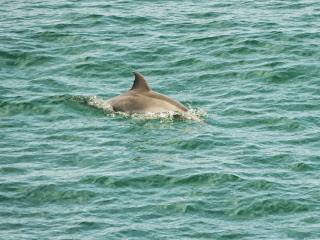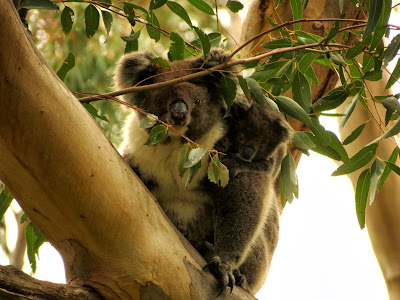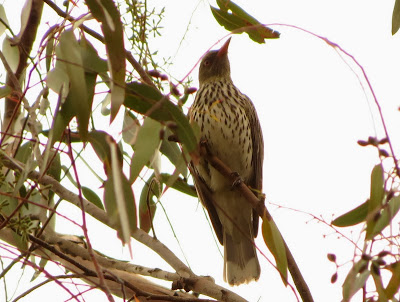Ok, so now I've figured out how to link pages I will slowly start adding my collection of bird photos to the Australian Birds tab. I've split them up into different bird families so I can easily see my collection thus far and will continually add to them with every new spotting.
As I go through my photos I will be adding posts to re-live the adventures associated with the spottings. These will not be limited to birds but include all wildlife encounters. The posts won't be in any particular order and will take some time to get through so I better get started!
You'll have to bear with me while I learn and play around with the formatting :-)
ADELAIDE
We just got back from a long weekend in Adelaide visiting my sister and her partner. They had organised a full itinerary to keep us busy and we were exhausted by the time we got back to Melbourne!
First up was a nice (but steep!) walk up and down Mt Lofty. It was a lovely warm sunny day and every man and his dog was out there sweating it up the hill. This Stumpy tail took a much more relaxed approach.
 |
| Shingleback, Tiliqua rugosa |
A screeching pair of Yellow-tailed Black Cockatoos got our attention as they flew into their nesting hole.
 |
| Yellow-tailed Black Cockatoo, Calyptorhynchus funereus |
 |
| Yellow-tailed Black Cockatoo, Calyptorhynchus funereus |
The next day we walked along the cliffs from Hallett Cove to Seacliff. There was plenty of bird and sea life about.
 |
|
 |
| Singing Honeyeater, Lichenostomus virescens |
|
Rock Dove, Columba livia |
This kestrel had just landed on the rocks with either a small brown snake or possibly a legless lizard in it's beak. Soon after it had landed another kestrel came and snatched it's prize away and then flew into the cliffs to some very hungry sounding chicks. Unfortunately I couldn't see the nest from the walking track.
A local mentioned she had also recently seen the kestrels flying in with pigeon chicks.
 |
| Nankeen Kestrel, Falco cenchroides |
 |
| Nankeen Kestrel, Falco cenchroides |
There were some very happy seals lounging around in the shallow waters.
 |
| New Zealand Fur-Seal, Arctocephalus forsteri |
 |
| New Zealand Fur-Seal, Arctocephalus forsteri |
And a pod of dolphins.
 |
| Bottlenose Dolphins, Tursiops aduncus |
 |
| Bottlenose Dolphins, Tursiops aduncus |
Of course we couldn't visit Adelaide without visiting some wineries, so it was off to McLaren Vale for lunch!
Nothing like lying on a picnic rug, sampling wines and listening to an orchestra of birds in the trees.
Found out recently that the Crimson (Adelaide) Rosella is thought to be a crossbreed of the Crimson and Yellow Rosella. Both species still interbreed with the Adelaide Rosella which is why it has such a variation in plumage.
 |
| Crimson (Adelaide) Rosella, Platycercus elegans flaveolus |
A young European Goldfinch was just starting to get some colour in its feathers.
 |
| Crested Pigeon, Ocyphaps lophotes |
 |
| Crested Pigeon, Ocyphaps lophotes |
Our last day was spent walking around Morialta conservation park.
 |
| Koala, Phascolarctos cinereus |
 |
| Koala, Phascolarctos cinereus |
This is my favorite spotting of the weekend - a beautiful Musk Lorikeet. Thanks to Adam for spotting it as it emerged from a hole in a tree and posed nicely on a branch for me before flying off.


A very quick Golden Whistler had me following it from tree to tree for ages and I think I was lucky to at least get this one clear shot.
 |
| Golden Whistler (male), Pachycephala pectoralis |
This skink looked very well fed!
 |
| White's Skink, Egernia whitii |
 |
| White's Skink, Egernia whitii |
 |
| King Spider-orchid, Caladenia tentaculata |
 |
| King Spider-orchid, Caladenia tentaculata |














































































